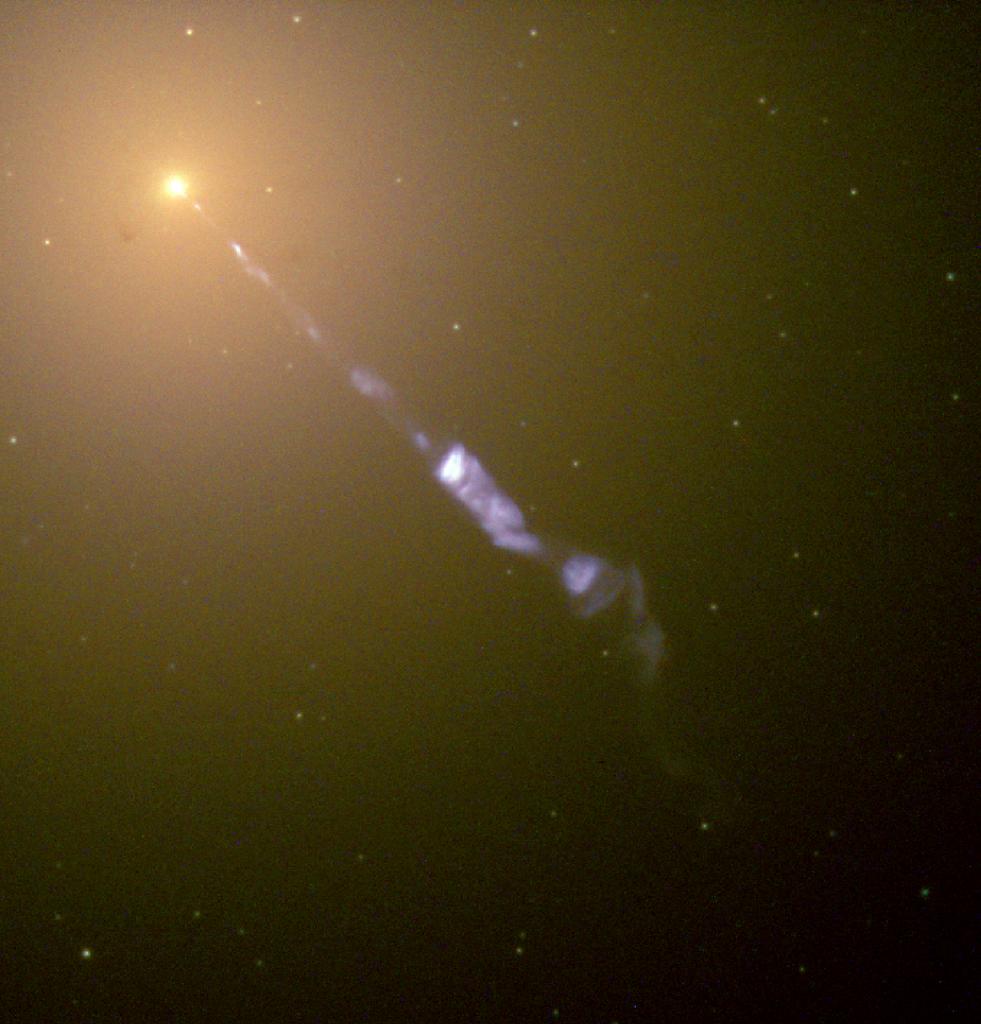To: NormsRevenge
An interesting take on M87 by one of the great astronomers,
Halton Arp: Galaxies, like a group of animals, reveal at a glance all stages of birth, growth and maturity. Take one example. M87 is a famous galaxy near the center of our Local Super Cluster. In 1918, even before the recognition of galaxies, it was observed with a small telescope to have a blue spike coming out of its center5. With the most expensive modern day telescope, the Hubble Space Telescope, Fig. 1 shows this spike contains a number of small, compact objects. These objects are radiating a continuous spectrum of synchrotron (charged particle) radiation. The conventional view is that they are clouds of hot gas ejected from the nucleus with about the speed of light (observed from displacement over time).
But how do you accelerate a cloud of hot gas to velocity near c? How do you get a hold of it? And why does it not just go POOF and dissipate? Even more revealing, one sees these objects grow in size and luminosity as they move outward along the jet. What do we see further out along the jet? For one, a radio, X-ray galaxy (M 84) with swept back X-ray isophotes indicating travel out along the jet. It is closely accompanied by a high redshift (z ~ 1) quasar. Further out is a very bright radio, X-ray quasar with flanking quasars around z = 1. This is all set in an extended line of X-ray sources and older, more evolved galaxies 5.
So we have spread out before us a more or less complete empirical demonstration of how galaxies are born and evolve. As the variable mass theory requires, the emergence of new matter near m = 0 requires speeds of pure energy near c. As the particle masses grow they slow down in order to conserve momentum in the extragalactic rest frame. That means the elementary particles cool. Together with the increasing gravity the growing matter condenses into a proto quasar/galaxy. (No dark matter needed!) When atoms form they at first radiate weak, high redshifted photons. The redshift then decreases with time as it evolves into a more normal galaxy. The variable mass theory requires the younger galaxies to have intrinsic redshifts which diminish as they evolve.
M87 is just one example but there are now dozens of galaxy/quasar/redshift observations which tell the same story6. The cry that has always gone up is that there is no viable theory to explain the redshift anomalies. But more than 20 years ago I left my office at Santa Barbara St. and went down to campus to ask Dick Feynman his opinion. After a considerable talk, not all of which I understood, he summed up by saying: The Hoyle-Narlikar theory is a complete theory and is not contradicted in any respect. But we do not need it because our present theory explains everything. There is always the chance he was putting me on a bit but I feel strongly that [if] he could see the evidence today he would say we need it.
12 posted on
04/14/2009 11:07:14 AM PDT by
aruanan
To: aruanan; NormsRevenge; Fred Nerks; blam; SunkenCiv

Hubble Space Telescope image of the jet emerging from M 87. The plasmoids are moving outward with velocities near c and becoming brighter.
Fascinating stuff....Low Mass Electron-Positron States
*****************************
Particle gravitation theories of the Hoyle-Narlikar type
...????......
FreeRepublic.com is powered by software copyright 2000-2008 John Robinson
